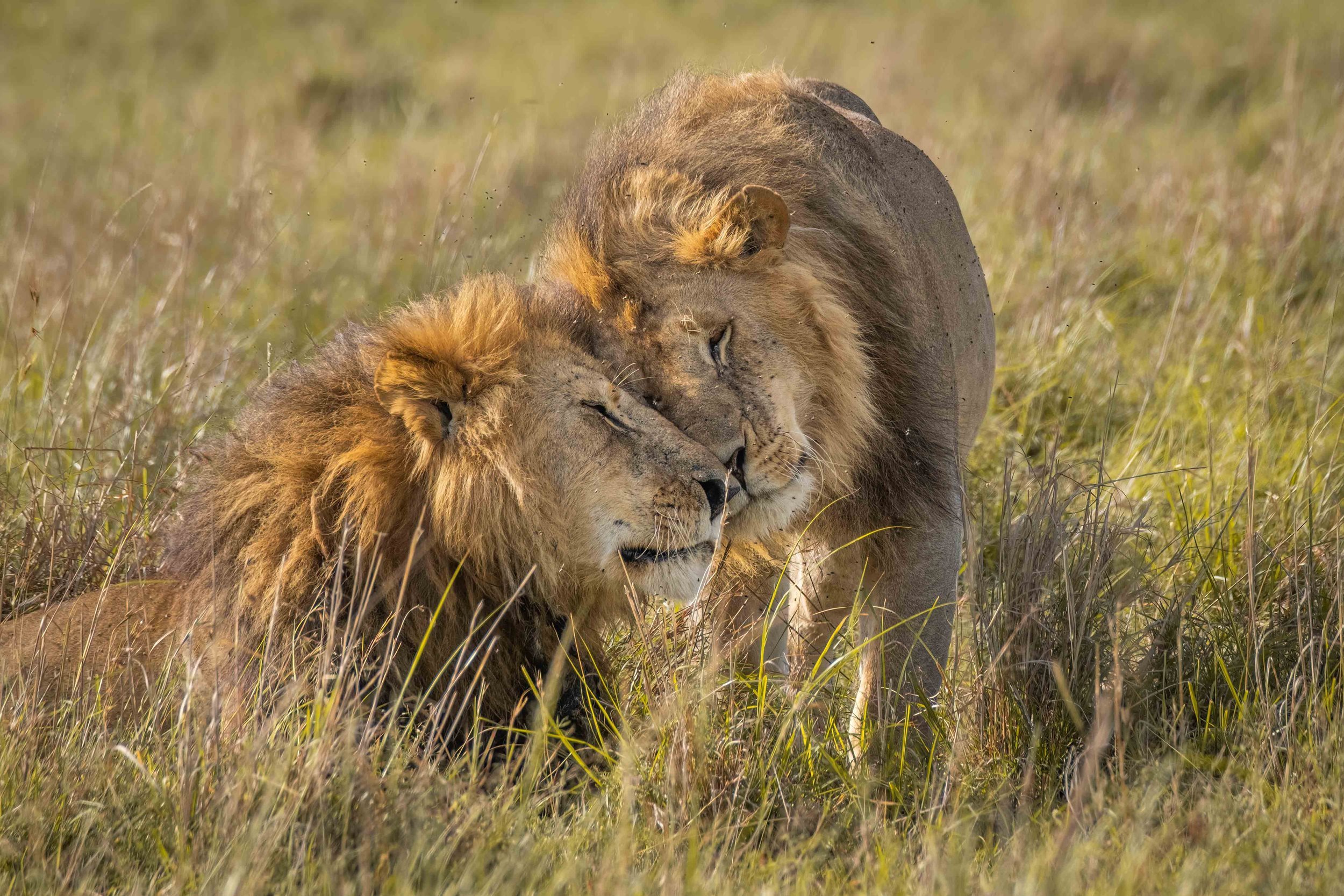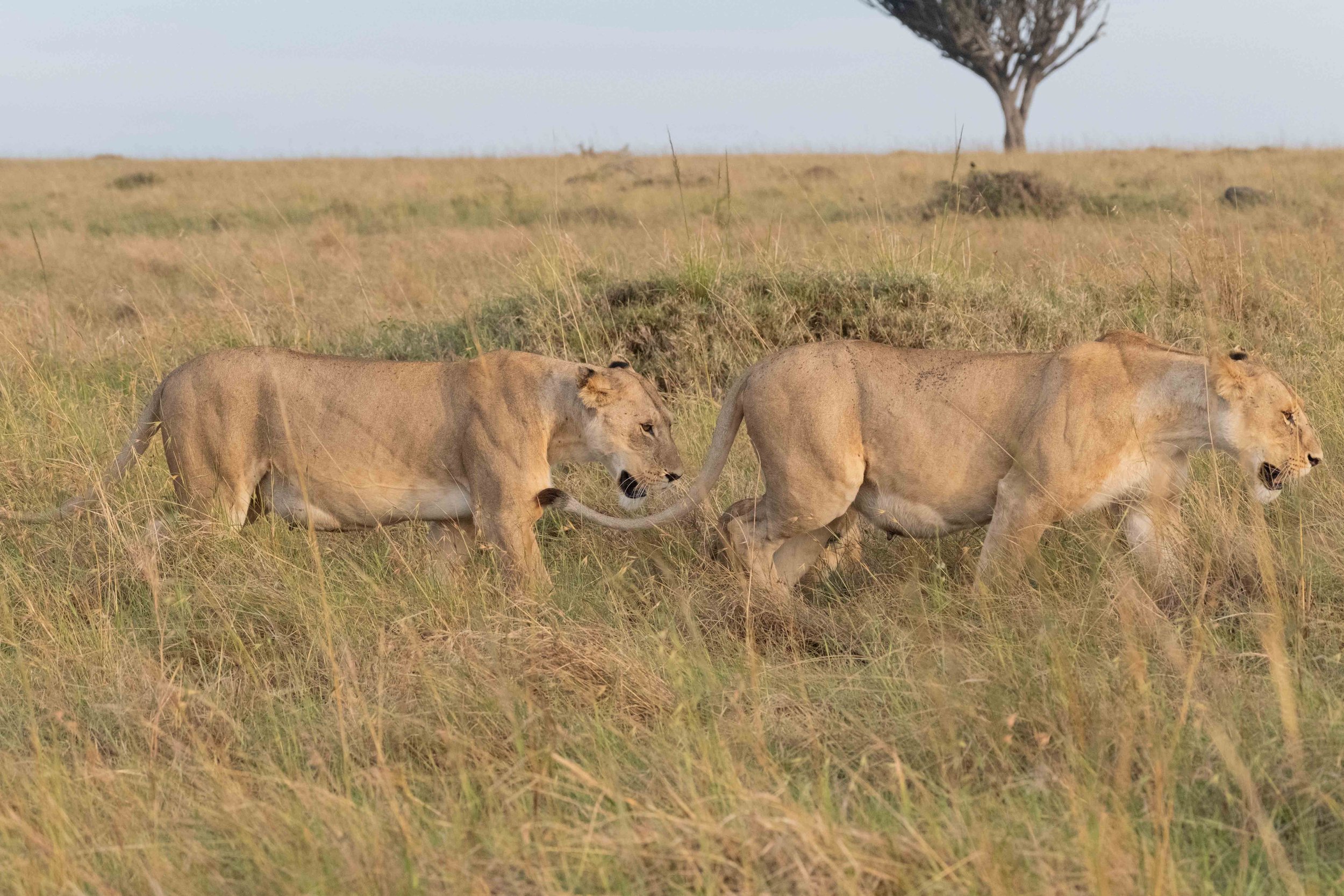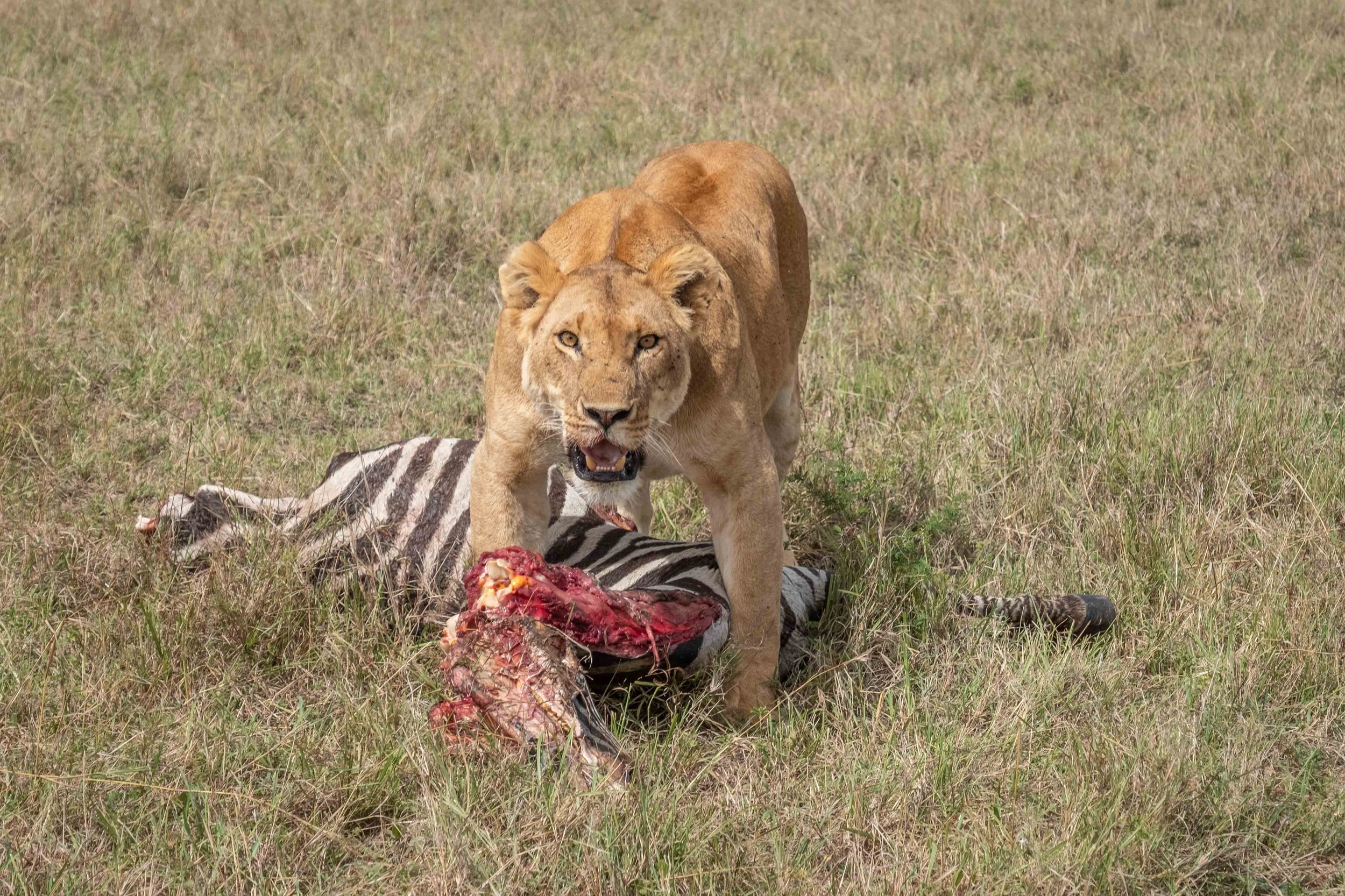Celebrating World Lion Day
We believe that a long time ago all wildlife belonged to the women and then they were released to the wild. No one brought them back. Now because women are involved in conservation, we will conserve them in the wild. Mparasaoi Lemantaan, Mama Simba Coordinator, Ewaso Lions.
“Let’s rock and roll!” grinned my Maasai guide, David Kupai Senchura, as we bounced down the dirt track in the early light towards the gates of the Maasai Mara Game Reserve. I’d asked if there was a chance we could find some lions that morning. “Sure!” He replied enthusiastically, “Let’s go on a lion hunt!”
In this 2 min. video clip of Kupai’s enthusiastic response we talk about heading out to find the Marsh Pride of lions made famous in the TV documentary The Big Cats’ Diary and another pride on a distant ridge called the Topi Pride. We’d spent time with the Marsh Pride a couple of days before and met their renowned protector, Half Tail, who lost the end of his tail in a battle for his territory.
A short distance after we entered the Maasai Mara Game reserve, we found the Marsh Pride again settling down after a successful night’s feast.
Half Tail’s fresh facial wound and full belly were proof of a successful hunt the previous night.
Sated, he found a nice mound of grass and stretched out for a long nap.
The morning’s highlight was the Topi Pride, a mega pride with over 20 lions protected by 3 large males known as the Salas Brothers.
When we arrived in their territory, we were met by the entire pride returning home. Lions are the only cats that live in strong social family groups. If you find one lion, you will usually find several lions.
Females rule in the lion world. It’s the lioness who leads the hunt, takes care of the cubs and supports her pride. Imagine taking a bunch of youngsters out for a night raid – it can’t be easy!
As apex predators, lions live at the top of the food chain. They help maintain a balance of prey species in the ecosystem. Sleeping lions may look harmless but a lion on the hunt is alert, vigilant and cunning. They are known for exceptional teamwork and are even capable of taking down animals as large as a 2,000-pound Cape Buffalo bull.
Lion numbers are plummeting. Their greatest threat is loss of habitat due to human wildlife conflict, trophy hunting, poaching and trade in body parts. Conservation efforts focus on protecting lions and supporting those who co-exist them. A decrease in the lion population has a devastating effect on an entire ecosystem. Want to help? Support conservation organizations like Ewaso Lions who are working tirelessly to protect lions and the people who live with them.











